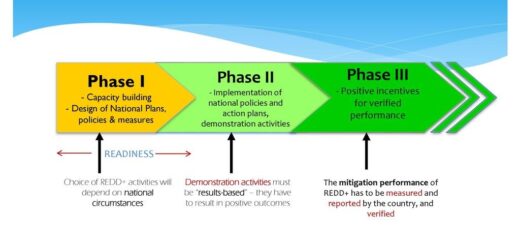National Current Affairs – UPSC/KAS Exams- 29th January 2020
Topic: Science and Technology
In News: NASA’s Spitzer Mission, which studied the universe in infrared light for more than 16 years, will come to an end since it is low on fuel and has been drifting away from Earth for a few years now. Engineers will decommission the Spitzer aircraft, after which it will cease to conduct science operations.
More on the Topic:
- The Spitzer Space Telescope is a space-borne observatory, one of the elements of NASA’s Great Observatories that include the Hubble Space Telescope and the Chandra X-Ray.
- Using different infrared wavelengths, Spitzer was able to see and reveal features of the universe including objects that were too cold to emit visible light.
- Apart from enabling researchers to see distant cold objects, Spitzer could also see through large amounts of gas using infrared wavelengths to find objects that may otherwise have been invisible to human beings.
- These included exoplanets, brown dwarfs and cold matter found in the space between stars.
- Spitzer also studied some of the most distant galaxies ever detected.
- Hubble and Spitzer in 2016 identified and studied the most distant galaxy ever observed.
- Using these two telescopes, scientists were able to see a bright infant galaxy as it was over 13.4 billion years ago, roughly 400 million years after the Big Bang, when the universe was less than 5% of its current age.
Source: Hindu
Topic: Environment and Ecology
In News: New archaeon was discovered by Indian scientists in Sambhar Salt Lake of Rajasthan.
More on the Topic:
- Archaea are a primitive group of microorganisms that thrive in extreme habitats such as hot springs, cold deserts and hypersaline lakes.
- These low paced-growing organisms are also present in the human gut, and have a direct relationship with human health.
- They are known for producing antimicrobial molecules, and for anti-oxidant activity with applications in eco-friendly waste-water treatment.
- Archaea are tough to be cultured due to challenges in providing natural conditions in a laboratory setting.
- New archaea is named Natrialba swarupiae, after Dr Renu Swarup, secretary, Department of Biotechnology, for her initiative in supporting microbial diversity studies in the country
| Sambar Salt Lake:
· Sambhar Salt Lake is India’s largest inland salt lake located in Nagaur and Jaipur districts of Rajasthan. · It is surrounded on all sides by the Aravali hills. · The lake is an extensive saline wetland. It is the source of most of Rajasthan’s salt production. · It has been designated as a Ramsar site (recognized wetland of international importance). It is important wintering area for flamingos and other birds that migrate from northern Asia. |
Source: Hindu
Topic: Environment and Ecology/Science and Technology
In News: Indian Railways first waste-to-energy plant has been commissioned at Bhubaneswar. It utilises Polycrack technology.
More on the Topic:
- Polycrack is the world’s very first patented heterogeneous catalytic process which converts multiple feedstocks into hydrocarbon liquid fuels, gas, carbon as well as water.
- The energy which will be produced at the plant, will be in the form of light diesel oil and this oil will be used to light furnaces. The plant, having a capacity of 500 kg per batch can be fed with the following:
- All kinds of existing plastic
- Petroleum sludge
- Un segregated MSW with moisture up to 50 per cent
- E-waste
- Automobile fluff
- Organic waste including bamboo, garden waste
- Jathropa fruit and palm bunch
The waste to energy plant which has been opened with this technology, has several advantages of treating solid waste over conventional methods. Some of the advantages are as follows:
- The pre-segregation of waste is not required for processing in the plant. The waste as collected from the source, can be directly fed into the polycrack plant.
- The plant has high tolerance to moisture hence drying of the waste after treatment, is not required.
- The waste is processed in the plant and reformed within a period of 24 hours
- The biological decomposition is not allowed as the waste is treated in the plant as it is received
- All the constituents are converted to valuable energy therefore, making it a zero discharge process through the plant
- The gas generated in the process of the plant is reused in order to provide energy to the system, hence making it self reliant and self sufficient for its energy requirements. This also brings down the operating cost of the plant.
- The plant does not cause atmospheric emission during the process unlike the other conventional methods except for the combustion of gases which have pollutants less than the prescribed norms across the world.
Source: Hindu
Topic: Environment and Ecology
In News: India has added 10 more wetlands to sites protected by the Ramsar Convention.
More on the topic:
- The 10 new ones are Nandur Madhameshwar, a first for Maharashtra; Keshopur-Miani, Beas Conservation Reserve and Nangal in Punjab; and Nawabganj, Parvati Agra, Saman, Samaspur, Sandi and Sarsai Nawar in Uttar Pradesh. The other Ramsar sites are in Rajasthan, Kerala, Odisha, Madhya Pradesh, Himachal Pradesh, Assam, West Bengal, Jammu and Kashmir, Andhra Pradesh, Manipur, Gujarat, Tamil Nadu and Tripura.
- With this, a total of 37 sites in the country have been recognised under the international treaty. Wetlands declared as Ramsar sites are protected under strict guidelines.
| Ramsar Convention:
· The Convention, signed in 1971 in the Iranian city of Ramsar, is one of the oldest inter-governmental accord for preserving the ecological character of wetlands. Also known as the Convention on Wetlands, it aims to develop a global network of wetlands for conservation of biological diversity and for sustaining human life. |
Source: Indian Express
Topic: International Affairs
In News: India was playing a lead role on connectivity in the South Asian region but the full potential of the South Asian Association for Regional Cooperation (SAARC) was not utilised because SAARC could not hold a formal meet in the last four years due to the tensions between India and Pakistan.
More on the Topic:
- SAARC was founded by seven states in 1985. In 2005, Afghanistan requested its accession to SAARC and formally applied for membership on the same year.
- This organization was formed in Dhaka on December 8, 1985, and its secretariat is based in Kathmandu, Nepal.
SAARC comprises the following member states:
- Afghanistan
- Bangladesh
- Bhutan
- India
- Maldives
- Nepal
- Pakistan
- Sri Lanka
A Shift Towards BIMSTEC:
- Tensions between India and Pakistan have led to New Delhi shifting focus from SAARC to BIMSTEC. For e.g. At the Kathmandu SAARC summit (2014) Pakistan vetoed connectivity agreements initiated by India when all other countries were ready to sign it.
- After the Uri attack of 2016, India boycotted the SAARC summit, which was to be held in Islamabad. The Summit was called off after other SAARC member states followed suit.
- Soon after, India invited BIMSTEC leaders to the BRICS outreach summit in Goa in 2016. In 2017 BIMSTEC summit, India’s PM announced, “It is a natural platform to fulfil our key foreign policy priorities of Neighbourhood First and Act East.”
- Thereafter, the 2018 BIMSTEC summit in Nepal saw the grouping pass a resolution demanding that states that “encourage, support or finance terrorism, provide sanctuaries to terrorists and terror groups” be held accountable.
Why SAARC remains relevant despite renewed interest in BIMSTEC?
- SAARC, as an organisation, reflects the South Asian identity of the countries, historically and contemporarily. It has geographical identity. Equally, there is a cultural, linguistic, religious and culinary affinity that defines South Asia. BIMSTEC despite its achievements is not tied in the identity of the nations that are members.
- South Asian countries are closely tied in their socio-political state as they face similar threats and challenges like terrorism, similar economic challenges, disaster etc.
- To face such challenges, the South Asian countries must cooperate. The European and ASEAN experience is testimony to the contribution of regional cooperation in the economic growth of the countries.
- BIMSTEC itself has faced challenges since its inception. It is also not well institutionalised as SAARC, which despite political tensions between its largest members has institutions for cooperation.
- Though there have been delays in regular SAARC summits, there are mechanisms of interaction within SAARCSouth Asian University, South Asia Satellite which keep SAARC relevant.
- India should take lead in creating platforms for informal discussions, formal mediation and resolution mechanisms tailored to the region’s specific needs and problems. So that bilateral issues do not hinder broader regional integration under both SAARC and BIMSTEC.
Source: Hindu
Topic: Environment and Ecology
In News: The Supreme Court lifted its seven-year stay on a proposal to introduce African cheetahs from Namibia into the Indian habitat on an experimental basis.
More on the Topic:
- The plan was to revive the Indian cheetah population.
- In 2012, the top court had stalled the plan to initiate the foreign cheetahs into the Palpur Kuno sanctuary in Madhya Pradesh fearing they may come into conflict with a parallel and a much-delayed project to reintroduce lions into the same sanctuary.
- The court was also worried whether the African cheetahs would find the sanctuary a favourable clime as far as abundance of prey is concerned.
| About Cheetah:
· The cheetah, Acinonyx jubatus, is one of the oldest of the big cat species, with ancestors that can be traced back more than five million years to the Miocene era. · The cheetah is also the world’s fastest land mammal, an icon of nature. With great speed and dexterity, the cheetah is known for being an excellent hunter, its kills feeding many other animals in its ecosystem—ensuring that multiple species survive. · The country’s last spotted feline died in Chhattisgarh in 1947. Later, the cheetah — which is the fastest land animal — was declared extinct in India in 1952. · Cheetahs are listed as “Vulnerable” by the International Union for the Conservation of Nature (IUCN) Red List of Threatened Species |
Source: Hindu



















